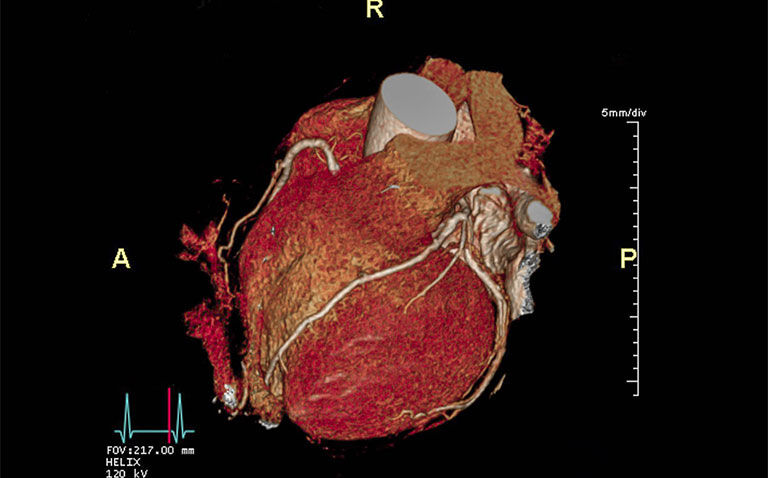A study by German researchers has shown that an ultrahigh resolution coronary CT angiography can enable clinicians to diagnose coronary artery disease in high-risk patients prior to transcatheter aortic value replacement.
Patients with severe aortic stenosis and who are suitable for transcatheter aortic valve replacement (TAVR), often have co-existing coronary artery disease (CAD). Moreover, guidelines recommend that patients suitable for TAVR undergo an assessment for CAD. Although coronary CT angiography can be used to assess the whether a patient has CAD, it often overestimates the extent of disease in high-risk patients. With the introduction of ultrahigh resolution coronary CT angiography, it may be possible to identify CAD in these high-risk patients.
Writing in the journal Radiology, the German team set out to determine the diagnostic accuracy of the new ultrahigh resolution coronary CT angiography for the detection of CAD compared with the reference standard of invasive coronary angiography (ICA).
The team examined participants with severe aortic valve stenosis and who were clinically indicated for transcatheter aortic valve replacement. All participants underwent ultrahigh-resolution photon-counting CT angiography and invasive coronary angiography, with the latter being part of their clinical care. The image quality was assessed on a 5-point Likert scale, where one was excellent and five non-diagnostic.
In addition, clinicians, who were blind to the ICA findings, assessed for the presence of CAD, defined by a 50% or greater stenosis. The ultrahigh resolution CT and ICA findings were compared using area under the receiver operating characteristic curve (AUC).
Diagnostic accuracy of the ultrahigh resolution CT
A total of 68 patients (mean age 81 years, 52.9% female) with severe aortic valve stenosis and an indication for TAVR were included in the comparative analysis. The median image quality score was 1.5 with most segments rated as either good or excellent quality.
The ultrahigh resolution CT AUC for the detection of CAD was 0.93 (95% CI 0.86 – 0.99) at the participant level, 0.94 (95% CI 0.91 – 0.98) at the vessel level and 0.92 (95% CI 0.87 – 0.97) at the segment level. This gave rise to a 96% sensitivity, an 84% specificity and 88% accuracy for the detection of coronary artery disease.
Although seemingly impressive results, the researchers called for confirmatory research with more subjects to improve the generalisability of their findings, as well as larger trials with patient-related end points to determine the potential clinical benefits of photon-counting CT.










